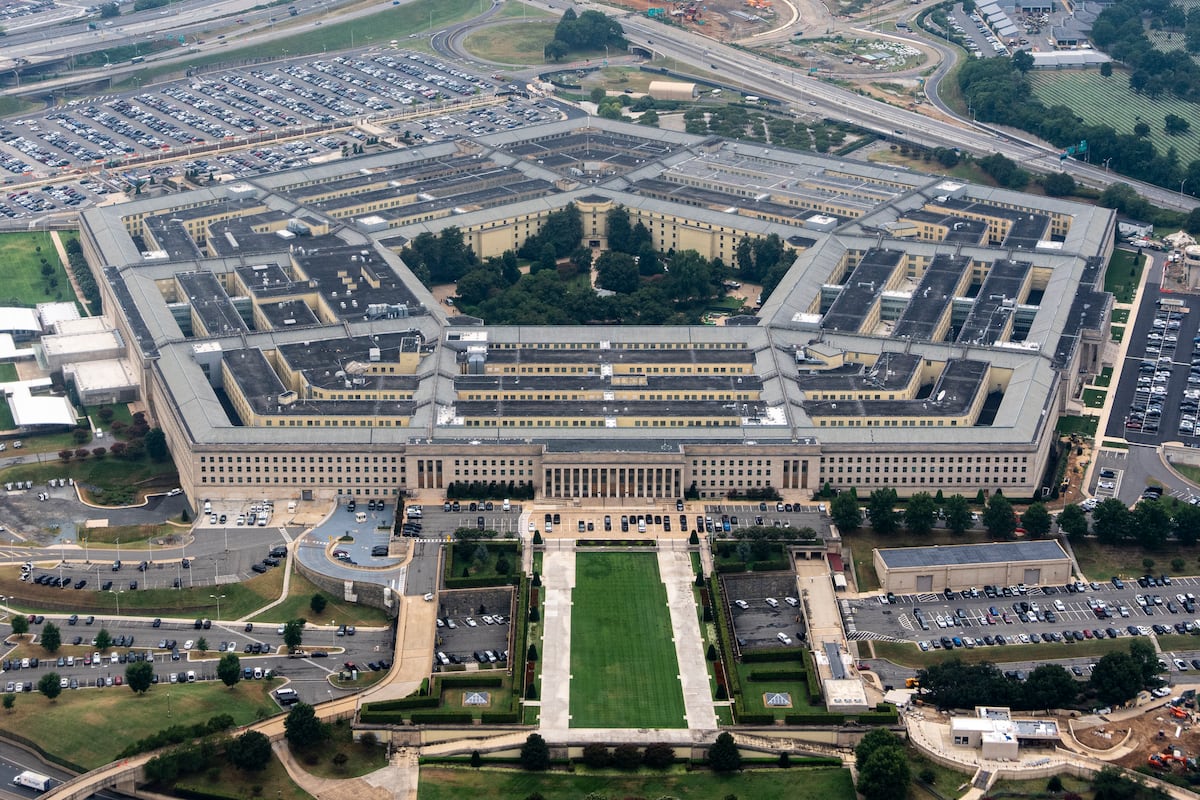President Trump’s plan for Ukraine’s future is falling flat on both sides of the Atlantic. His chief negotiator Steve Witkoff reportedly helped draft a 28-point plan with his Russian counterpart last month in Miami. No Ukrainians were present for those talks, according to Axios. But now Ukraine’s president is under pressure from Trump’s Army secretary to find a way forward—possibly as soon as this Thursday—using that plan as at least a start point to end Russia’s nearly four-year invasion and occupation of eastern Ukraine.
Latest: The 28-point plan is now a 19-point plan, according to the Financial Times, reporting Monday. However, “the most politically sensitive elements [are still] to be decided by the countries’ presidents,” FT’s Christopher Miller reports. According to one Ukrainian official, “Very few things are left from the original version.”
U.S. and Ukrainian officials met Sunday in Geneva to begin work on “an updated and refined peace framework,” according to a joint statement from the two countries. It’s not yet clear what’s been updated. So far, “Only one EU leader—Hungary’s Kremlin-friendly Prime Minister Viktor Orbán—has unconditionally backed Witkoff’s plan, which critics say makes disproportionate concessions to Russia,” Politico reported Sunday. Polish Prime Minister Donald Tusk shared his misgivings on Twitter Sunday, writing, “before we start our work, it would be good to know for sure who is the author of the plan and where was it created.”
Trump even walked back his support for the Witkoff document, telling reporters at the White House Saturday that it’s “not my final” offer. “We’re trying to get it ended. One way or the other, we have to get it ended,” he said.
Cracks in the White House’s plan began emerging publicly in Europe early last week, as Axios and Politico reported when word of the 28-point plan emerged. Indeed, one European Union defense official told Politico on Wednesday, “Europeans have not been consulted on this…The Russians have clearly identified Witkoff as someone who is willing to promote their interests.” On Thursday, the EU’s foreign policy chief Kaja Kallas told reporters, “In this war, there is one aggressor and one victim. So far, we haven’t heard of any concessions from Russia’s side.”
By Friday, those cracks had spread from Europe to Congress. Senate Armed Services Committee Chairman Roger Wicker, R-Miss., shared his serious misgivings in a public statement.
“This so-called ‘peace plan’ has real problems, and I am highly skeptical it will achieve peace,” Wicker said. “Ukraine should not be forced to give up its lands to one of the world’s most flagrant war criminals in Vladimir Putin…The size and disposition of Ukraine’s armed forces is a sovereign choice for its government and people. And any assurances provided to Putin should not reward his malign behavior or undermine the security of the United States or allies. In particular, any suggestion that we can pursue arms control with a serial liar and killer like Putin should be treated with great skepticism.”
GOP Sens. Mitch McConnell and Lindsey Graham also said they opposed Trump’s plan. “While there are many good ideas in the proposed Russia-Ukraine peace plan, there are several areas that are very problematic and can be made better,” Graham wrote on social media Saturday.
McConnell: “If Administration officials are more concerned with appeasing Putin than securing real peace, then the President ought to find new advisors,” the former majority leader said in his own statement Friday. “Rewarding Russian butchery would be disastrous to America’s interests. And a capitulation like Biden’s abandonment of Afghanistan would be catastrophic to a legacy of peace through strength.”
Historian reax: Anne Applebaum described it as a “Murky Plan That Ensures a Future War,” writing Saturday in The Atlantic.
One lingering question from these White House ambitions in Ukraine: Why is the U.S. Army’s man-train-equip boss, Secretary Dan Driscoll, doing diplomacy? One user remarked on Reddit, “The secretary of the army delivering a peace plan that’s essentially, give up territory, reduce your military by half, and capitulate is not…the warrior spirit I expected from him.”
Related reading:
Around the Defense Department
How the Army’s most tech-forward divisions are practicing for war. Defense One’s Jennifer Hlad reports from a two-week Joint Pacific Multinational Readiness Center exercise in Hawaii, where the 25th Infantry Division worked with every U.S. service branch plus seven partner nations to defend an archipelago and take back islands seized by the enemy.
The exercise involved 75 tech-centered experiments. “We have old stuff, we have new stuff, and we’re fighting in a new way,” said Col. Dan Von Benken, the division’s artillery commander. Read on, here.
Can partner nations help solve the Navy’s shipbuilding woes? Chief of Naval Operations Adm. Daryl Caudle thinks so; his first trip abroad as the Navy’s top officer took him to South Korea and Japan in search of assistance in expanding and accelerating his service’s ability to add warships. Hlad talked with him at Pearl Harbor, here.
Additional reading: “HII Delivers Virginia-Class Submarine Massachusetts (SSN 798) to U.S. Navy,” the firm announced Friday.
Commentary: More is needed to turn the Marine Corps’ aspirations into reality. Three former commandants—retired generals Krulak, Hagee, and Conway—acknowledge Gen. Eric Smith’s calls for more amphibious warfare ships and the expected National Defense Strategy’s inward turn, but say the Force Design concept is still leading the service astray. Read that in Defense One, here.
Trump 2.0
Regime change disguised as drug war? Several months of satellite data suggests the Pentagon’s recent naval buildup around Latin America “is focused more on a pressure campaign against Venezuela than on the counternarcotics operation the Trump administration says it’s waging,” the New York Times reported Friday, with a big assist from Ollie Ballinger of the University College London’s Center for Advanced Spatial Analysis.
How so? The “busiest [cocaine] smuggling routes…are off the coast of neighboring Colombia.” But those are “several hundred miles” away from where U.S. Navy cruisers and destroyers “have consistently been sailing in an area 50 to 100 miles off Venezuelan shores,” Riley Mellen of the Times reports. What’s more, “smuggling routes in the Caribbean are dwarfed by those in the eastern Pacific, which has not seen a comparable influx of American military assets.”
Expert reax: “The naval presence that we’re seeing here is aimed at Venezuela, and they can see it,” Mark Cancian of the Center for Strategic and International Studies told Mellen. Continue reading (gift link), here.
If the U.S. goes to war with Venezuela, it would be doing so without authorization from Congress, without casus belli, without any allies or international support, without an apparent plan for the country after Maduro is gone, and without any apparent preparation for stabilization or containing the fallout, noted Illinois international relations professor Nicholas Grossman, writing Monday on social media.
Related: Trump and his aides “repeatedly steamrolled or sidestepped government lawyers” questioning the legality of using the military to kill alleged drug traffickers, several current and former officials told the Washington Post, reporting Saturday.
“The question is, is it legal just to kill the guy if he’s not threatening to kill you and you’re outside an armed conflict?” a former senior official said. “There are people who are simply uncomfortable with the president just declaring we’re at war with drug traffickers.”
And lastly today: Trump’s recent call for political retribution indicates that “The President Is Losing Control of Himself,” former Naval War College professor Tom Nichols argued Friday for The Atlantic.
Tipping point? “A group of Democratic legislators—all of them either military veterans or former national-security officials—may have helped to push the president over the edge,” Nichols writes for those who may have missed the headlines (like this one). “On Tuesday, they issued a video reminding members of the U.S. Armed Forces that their oath of service requires them to refuse illegal orders, and that their loyalty is owed not to any one president, but to the Constitution itself.”
“Normally, legislators don’t feel the need to make such an obvious declaration, but the president is using the military—including deploying troops to U.S. cities and ordering the killing of people on the high seas—in ways that almost certainly involve illegal orders,” Nichols warns. “This is a new and dire development in the ongoing American constitutional crisis. The voters, Congress, and, yes, the U.S. military must all now be more vigilant than at any time in our modern history,” he writes. Read the rest (gift link), here.
ICYMI: Sen. Jack Reed, D-R.I., also has issues with the president’s calls for political violence. “President Trump’s social media posts were inflammatory, irresponsible, and totally unacceptable,” Reed said in a statement Friday. “He continues to try to use intimidation and executive overreach to silence his critics. The Trump Administration systematically ousted judge advocates general (JAGs)—military lawyers—who are supposed to advise commanders on the rule of law, including whether presidential orders are legal.”
“This purge of independent JAG officers offering principled legal advice free from partisan influence has raised all kinds of legitimate legal and ethical concerns,” said Reed, the ranking member on the Armed Services Committee. “I would welcome the Secretary of Defense coming to Congress to testify about this matter if he has any issues with my colleagues restating the law and encouraging people to stand up for our Constitution. President Trump should know a thing or two about seditious acts because he himself pardoned many violent January 6th criminals who were convicted of seditious conspiracy.”
Read the full article here








Leave a Reply